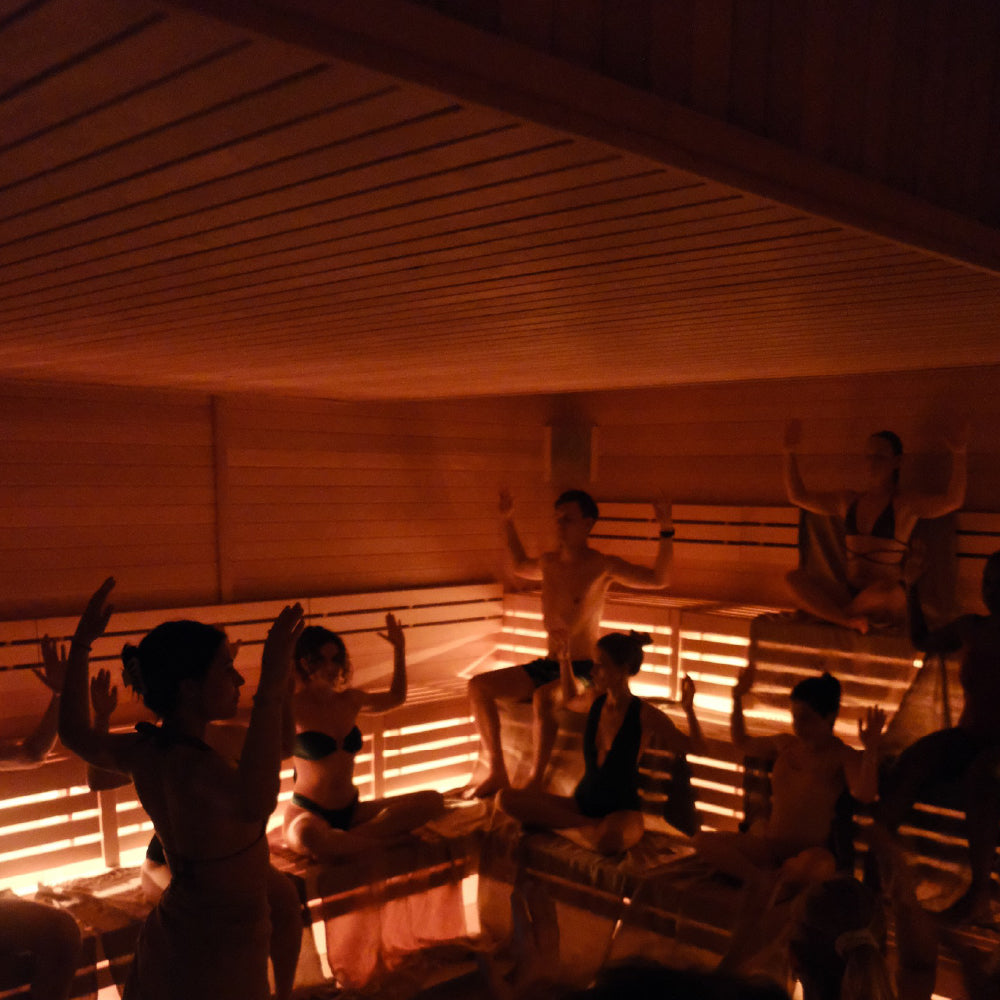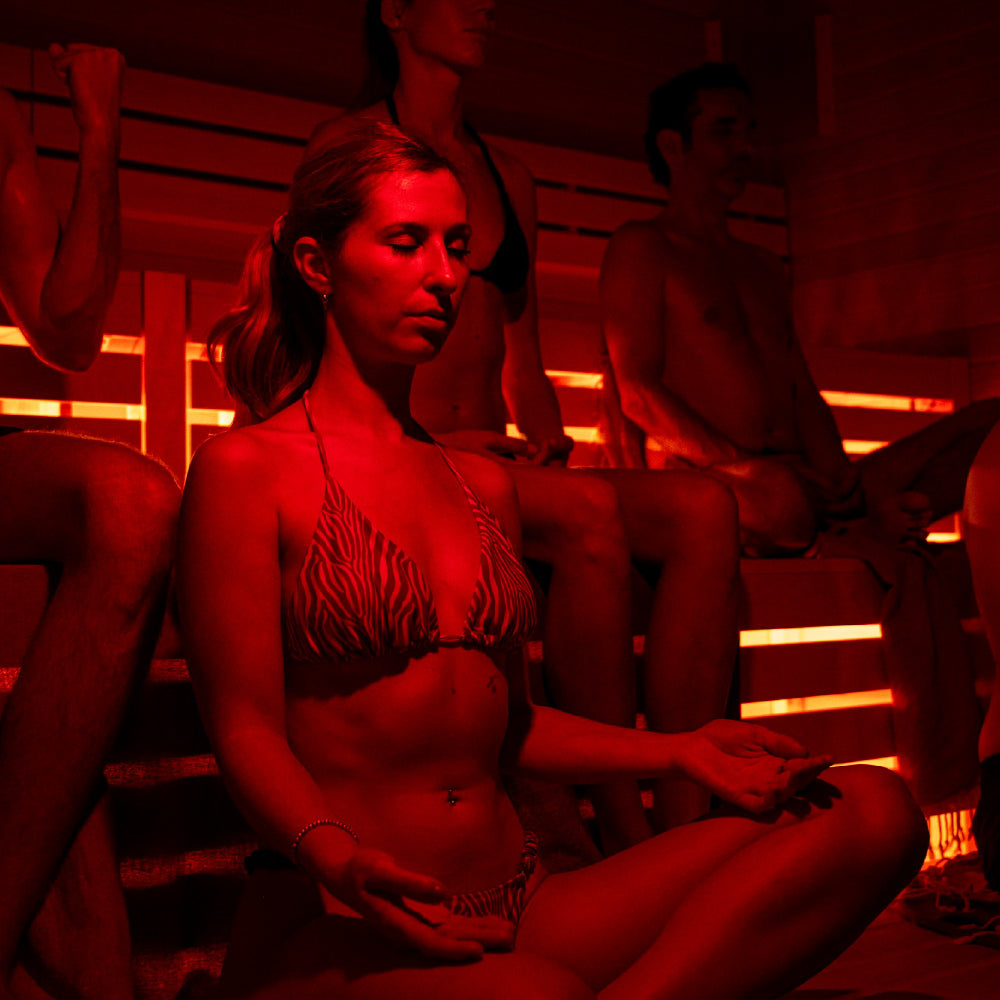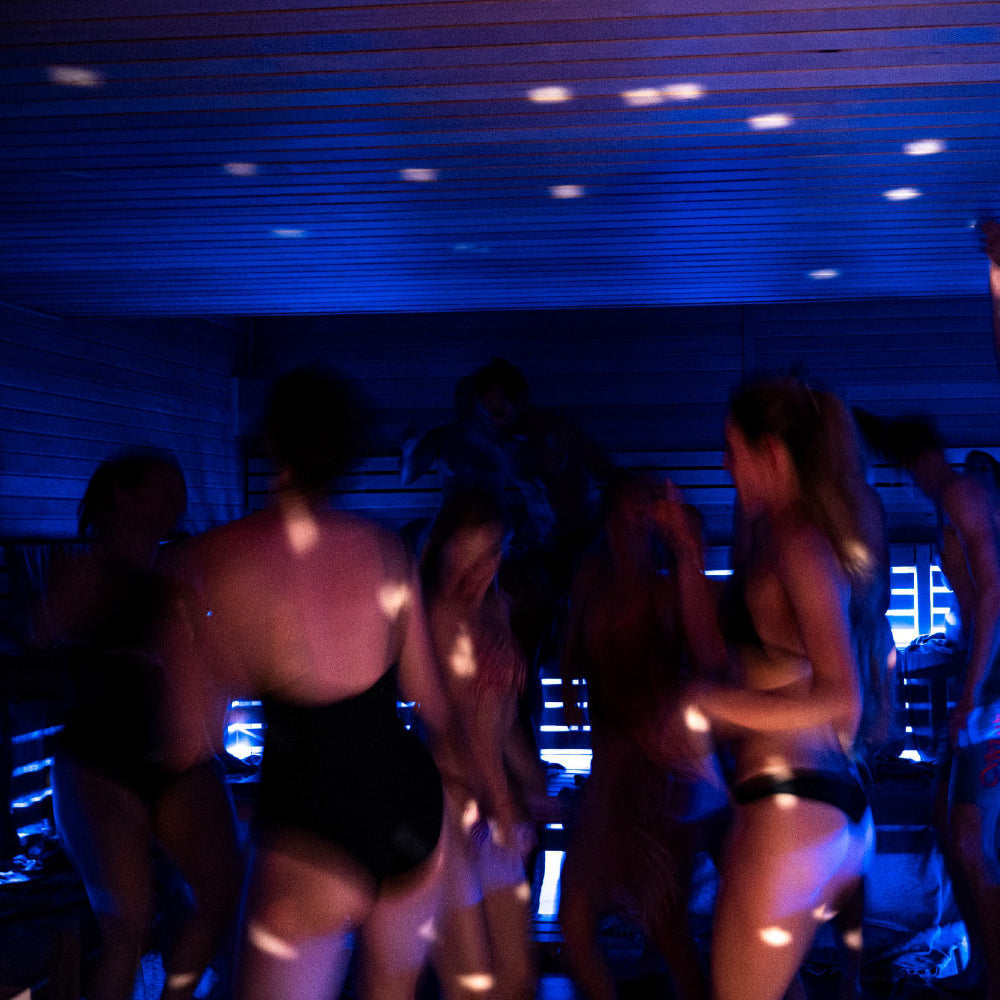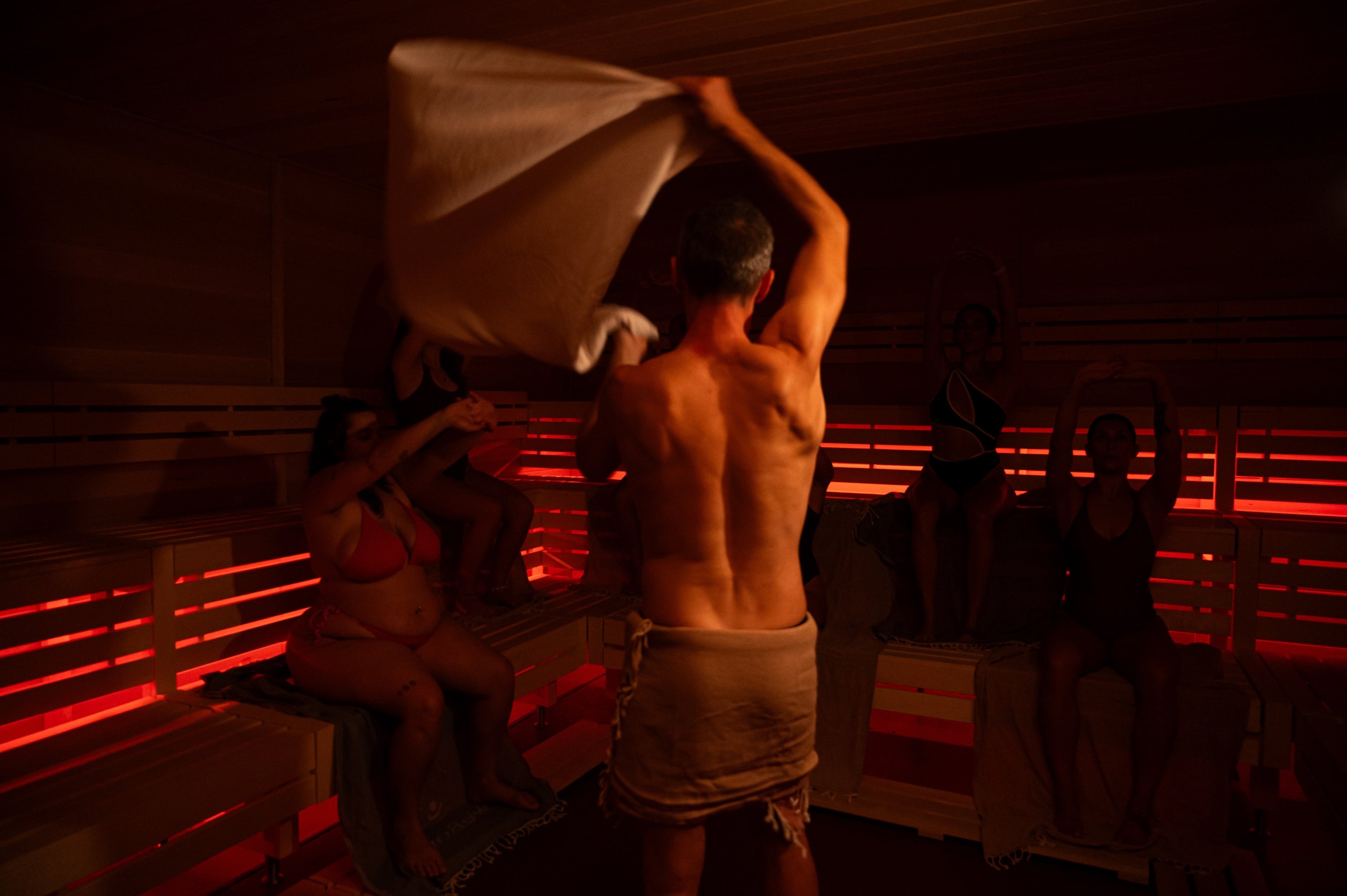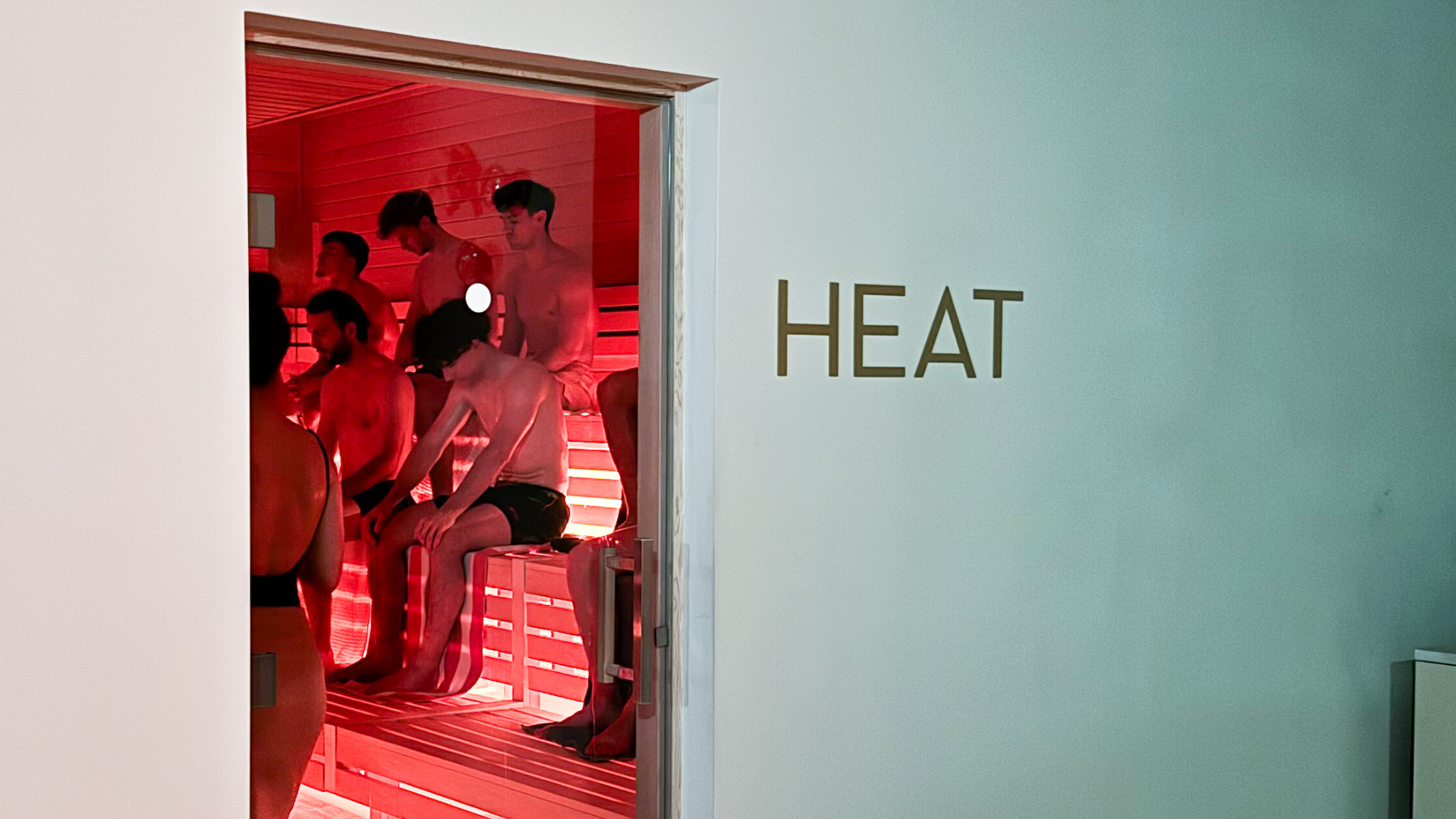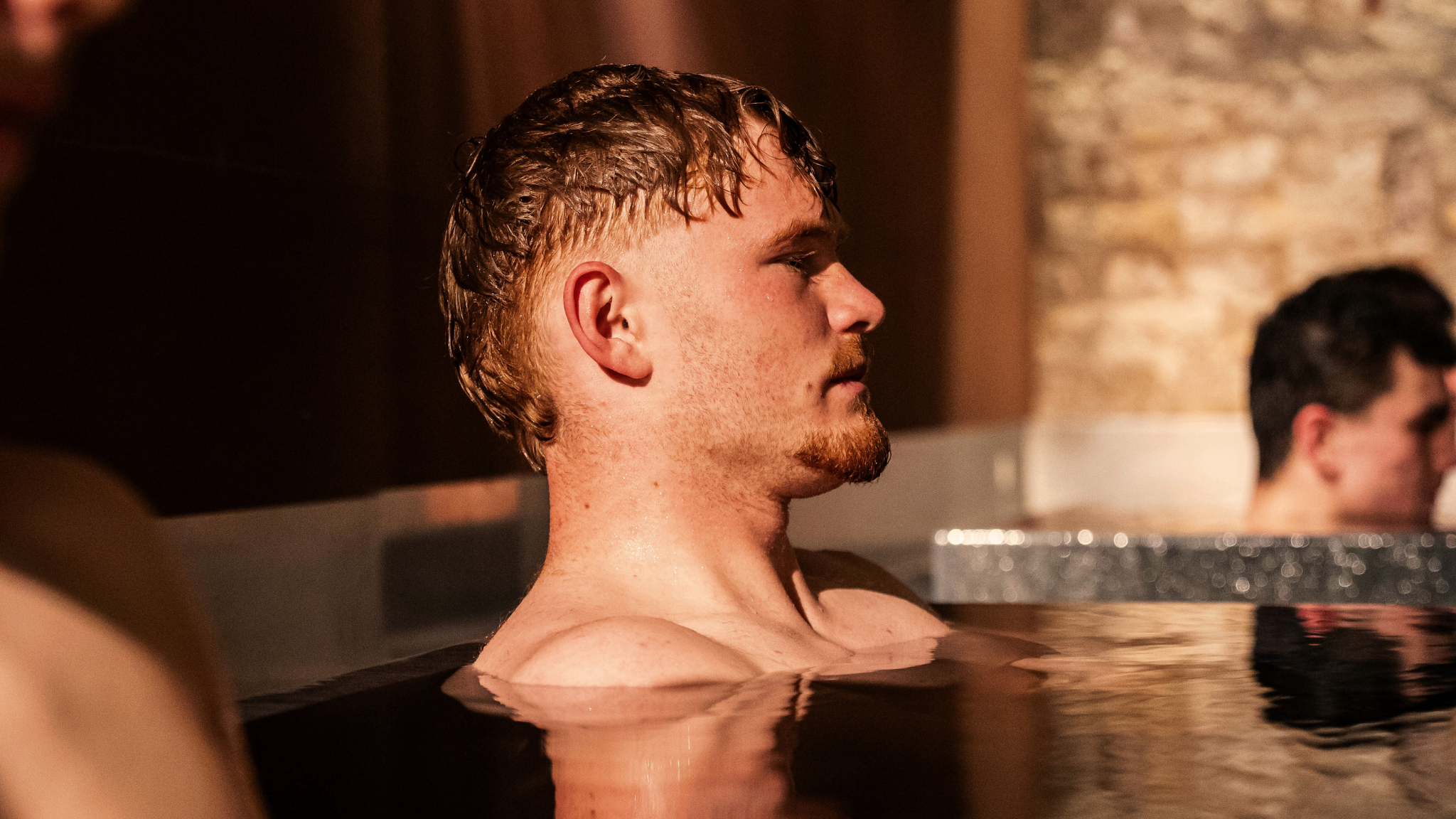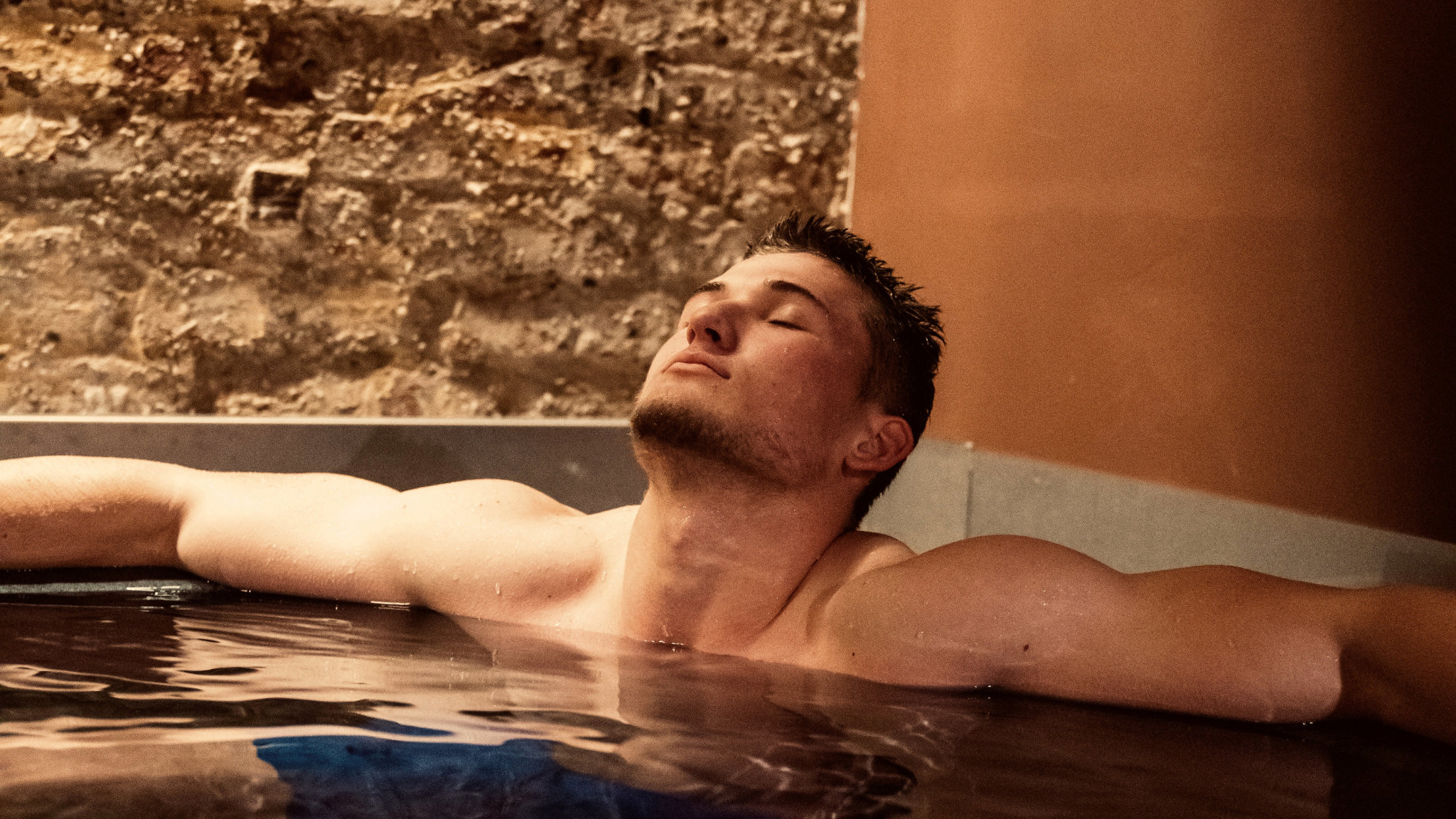

· Von Katharina Fojtl
Wie kann ich Muskelkater reduzieren? Wie kann ich nach dem Sport schneller wieder fit werden?
Die Wissenschaft hinter Sauna und Eisbädern für Sportler:innen
Muskelkater nach dem Training? Egal ob du gerade ein neues persönliches Ziel erreicht hast oder ein intensives Workout hinter dir liegt – Regeneration ist genauso wichtig wie das Training selbst. Zwei bewährte und wissenschaftlich fundierte Werkzeuge helfen dir dabei, schneller wieder fit zu werden, Muskelkater zu lindern und deine Performance am nächsten Tag zu verbessern: Sauna und Eisbaden. Hier erfährst du, wie sie wirken.
🔥 Die Kraft der Wärme: Wie Saunagänge die Muskelregeneration unterstützen
Saunen sind nicht nur zum Entspannen da – sie sind ein starkes Tool zur Reduktion von Muskelkater und fördern die Erholung nach dem Training.
Ein Saunagang innerhalb der ersten Stunde nach dem Workout kann den sogenannten DOMS (Delayed Onset Muscle Soreness, „verzögerter Muskelkater“) verringern. Der Grund? Die bessere Durchblutung hilft dabei, Abfallstoffe schneller abzutransportieren und Entzündungen zu reduzieren. Zusätzlich schüttet dein Körper durch die Hitze Endorphine aus – natürliche Schmerzmittel.
Doch es bleibt nicht nur beim guten Gefühl:
Regelmäßige Saunagänge verbessern nachweislich die sportliche Leistung.
Wissenschaftlich belegt ist ein Anstieg des Plasmavolumens um 7,1 % und der Anzahl roter Blutkörperchen um 3,5 %. Beides verbessert die Durchblutung und den Sauerstofftransport. Das wiederrum hilft dir bei der nächsten Sportsession und verbessert deine Leistung.
Außerdem kann regelmäßige Hitzebelastung Wachstumshormone anregen – kombiniert mit Krafttraining führt das zu besseren neuromuskulären Anpassungen.
Wenn du also nach dem Training Muskelkater vermeiden möchtest: Wärme ist dein Freund – besonders direkt im Anschluss.
❄️ Warum Profisportler:innen auf Eisbäder schwören
Eisbaden – auch bekannt als Cold Water Immersion (CWI) – ist ein bewährter Klassiker zur Regeneration und Linderung von Muskelkater.
Eisbaden hilft, Entzündungen zu senken, Erschöpfung zu reduzieren und den Wert von Kreatinkinase (CK) – einem Marker für Muskelschäden – zu verringern.
Außerdem reduziert es CK effektiver als passive Erholung (also einfach nur ruhen ohne aktives Zutun wie Dehnen, Bewegung oder Wechselbäder).
Wahrgenommene Erholung: Viele Sportler:innen berichten, dass sie sich nach einem Eisbad schneller erholt, weniger erschöpft und bereit für die nächste Einheit fühlen.
Eisbäder helfen zudem, die Muskelkraft nach intensiven Intervallen (z. B. HIIT) zu erhalten – besonders wichtig für explosive Sportarten wie Sprinten oder Gewichtheben.
Wenn du dich also fragst, was bei Muskelkater hilft: Kälte ist eine hocheffektive Strategie.
⚠️ Wichtig bei Muskelaufbau (Hypertrophie):
Warte nach dem Training etwa 4 Stunden mit dem Eisbad. Warum?
Weil in diesem Fall die Entzündungsreaktion gewollt ist – sie regt den Muskelaufbau an. Kühlst du zu früh, kann der Effekt abgeschwächt werden.
🔄 Kontrasttherapie: Sauna & Eisbad im Wechsel für maximale Regeneration
Der Wechsel zwischen Hitze und Kälte – auch bekannt als Kontrasttherapie – kann die Durchblutung noch stärker anregen.
Das verbessert die Regeneration, senkt Entzündungen und trainiert zusätzlich deine mentale Widerstandskraft.
Und genau diese mentale Stärke kann im Training oder im Wettkampf den entscheidenden Unterschied machen. 💪
Für einen extra Boost empfehlen sich Kontrastsitzungen im halb-gefasteten Zustand – also mit einem kleinen Snack vorab (z. B. eine Banane oder ein paar Mandeln), um den Blutzuckerspiegel stabil zu halten. Am besten klappt das morgens.
Kontrasttherapie ist ideal, wenn du dich fragst: Was tun bei Muskelkater? Oder wie regeneriere ich schnell, ohne Trainingspausen?
🧠 Zusammenfassung: Dein Regenerationstoolkit im Überblick
✅ Sauna fördert die Durchblutung, lindert Muskelkater und steigert langfristig Ausdauer & Leistungsfähigkeit.
✅ Eisbad senkt Entzündungen, Müdigkeit und Muskelschäden – vor allem nach intensiven Workouts.
✅ Kontrasttherapie kombiniert die Vorteile beider Methoden für optimale Ergebnisse.
⚠️ Muskelwachstum im Fokus? Warte ca. 4 Stunden nach dem Training mit dem Eisbad, um den Muskelaufbaureiz nicht zu stören.
Ob schmerzende Beine nach dem Leg Day, Steifheit nach dem Laufen oder allgemeine Erschöpfung – Wärme- und Kälteanwendungen in deiner Routine können einen riesigen Unterschied machen – für dein Wohlbefinden und deine Leistung. Teste Kontrasttherapie bei WeBorn selber.

